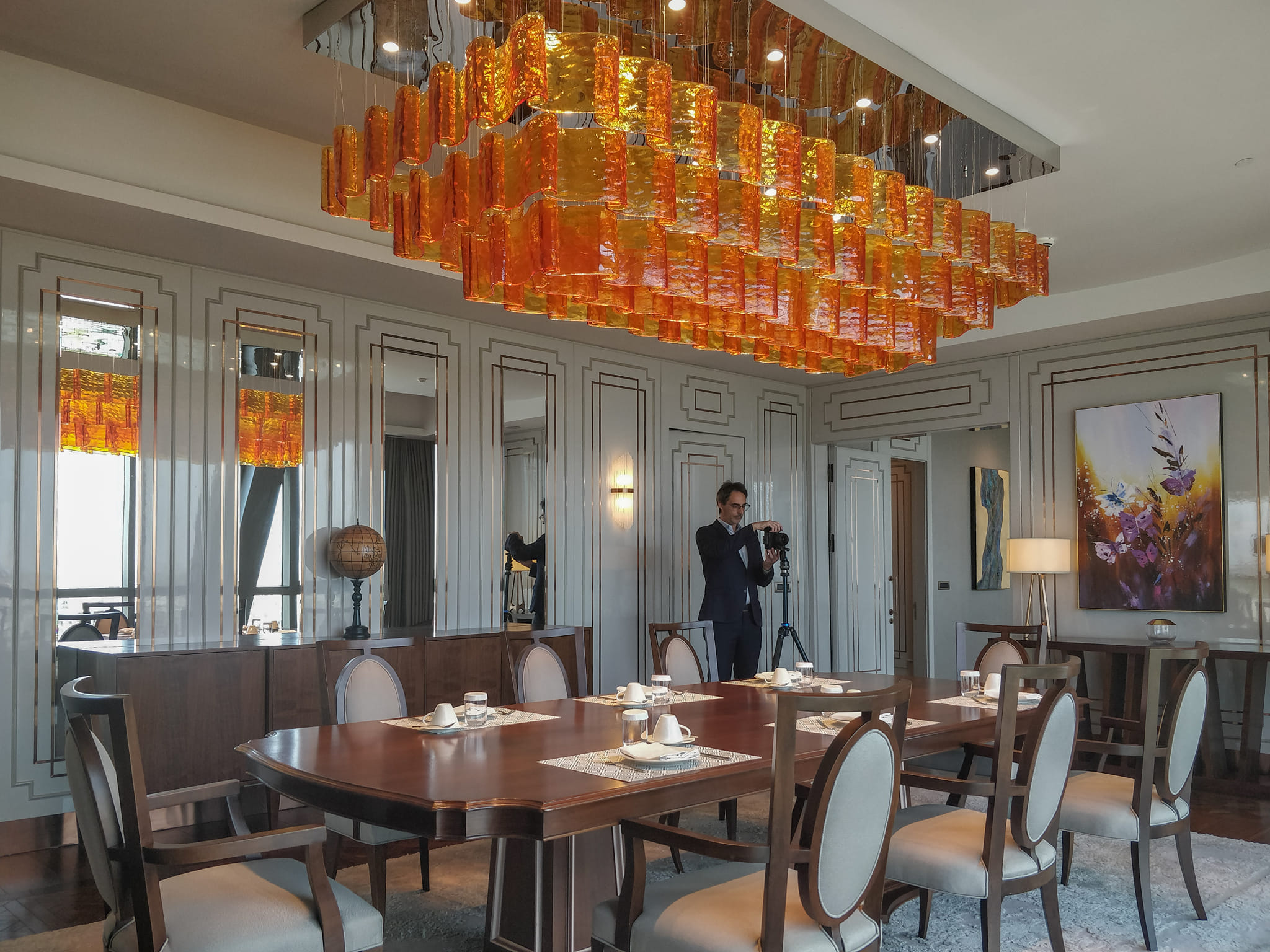DESCRIPTION OF THE JOB OF A VIRTUAL TOUR PHOTOGRAPHER FOR LUXURY HOTELS
As a photographer specializing in luxury hospitality and heritage, I’d like to outline my work process and the time required to create a high-end, personalized virtual tour. I won’t delve into the communication, follow-up, and negotiation emails preceding contract acquisition.
PHOTO SHOOTS :

It’s not just about finding the right angle for a good photo; it’s about capturing every direction. Often, I adjust objects slightly away from the center, arranging everything around them for a complete 360-degree view. For instance, if I’m in a room and can see the bathroom, it should be positioned to showcase maximum detail too. This includes ensuring that the sheets and curtains fall perfectly and aligning chairs and tables.
For a panorama, using a panoramic head, I take 8 photos at different brightness levels (interior and exterior).
Sometimes, multiple shots are necessary to avoid distracting reflections on windows.
One panorama typically takes between 30 minutes and 1 hour, depending on the complexity of the room and adjacent areas visible in the panorama. For 40 panoramas, this represents a minimum of 20 hours’ work, so it’s best to start as soon as possible.
MISSION DURATION :

To create high-quality, diverse, and authentic content, the photographer must somewhat experience the client’s perspective to translate it accurately. This involves not only time for shooting but also capturing different times of day and night. When the hotel is occupied, client satisfaction is paramount, so it’s not uncommon to shoot during the night or early morning to avoid disturbances.
Missions usually span 4 to 6 days, depending on the number of virtual tours required. (count 10 panoramas by day)
PRE-PRODUCTION :

Typically, after shoots, I back up the data in the evening. If time allows, I start pre-post-processing and image alignment: Each panorama face is scrutinized to address lighting issues, and for significant discrepancies (e.g., backlighting), specific Photoshop masking is required. Once the 4 images are perfect, I proceed with stitching. The final step involves extracting the spherical panorama, removing the tripod, and working on the photo independently in Photoshop.
Time for one panorama ranges from 30 minutes to 1 hour, depending on the complexity of the shots.
POST-PROCESSING:

Upon returning home, I finalize all stitching and work on each image individually: Cleaning, balancing highlights and shadows, masking TV screens, etc.
This process for one panorama takes 1 to 4 hours, depending on panorama complexities.
WEBSITE AND SKIN CREATION:

Drawing inspiration from the hotel’s brand, I create a skin tailored to the client. This involves menu creation, functionality development, and link integration. Additionally, a separate smartphone-friendly menu (vertical-UX friendly) is created. I thoroughly test the site, optimize all images, and ensure the virtual tour’s weight is manageable.
This phase typically takes 10 hours.
SOCIAL MEDIA CONTENT CREATION:

Designing images for Facebook, creating personalized videos for LinkedIn and Instagram, developing a personalized guide for using the virtual tour.
Total time: 10 hours.


